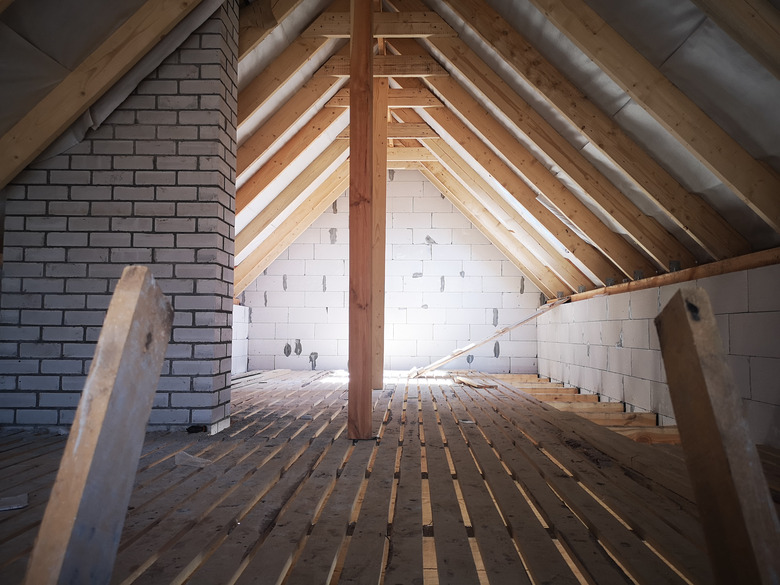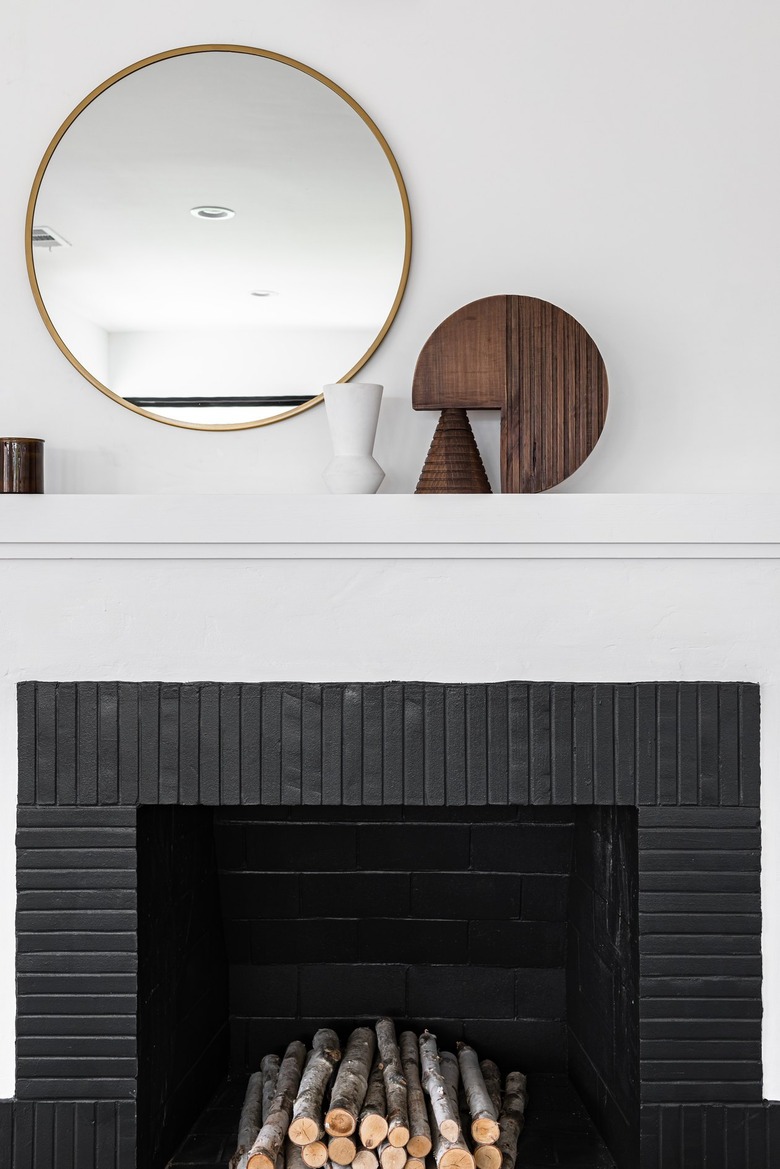Keep Your Home Warmer: Expert Insulation Tips
We may receive a commission on purchases made from links.
Insulating your home is a great way to save money on your home energy bills while keeping yourself warmer all winter long — which is particularly important during dangerously cold temperatures. Proper home insulation traps in the heat so you don't have to constantly run the heater or keep the fireplace burning. While there's no way to fully stop heat loss, the more insulation you have, the more slowly your home loses heat. There are many DIY techniques homeowners can use to better insulate their home to make it more energy efficient, ranging from upgrading attic insulation to blocking pesky drafts from entering through the door's mail slot.
Perform an Energy Audit
Perform an Energy Audit
When you really want to ensure your home is properly insulated, it can pay to hire a professional energy auditor to tell you exactly how much energy you're losing with your current insulation methods and to identify every possible source of heat loss. If you don't have a few hundred dollars to hire a professional, it still helps to perform an energy audit of your own. Look for air leaks letting cold air inside and specifically take a look at the current insulation of your attic, crawl space, doors, garage door, windows, hot water heater, hot water pipes and fireplace.
Types of Wall Insulation
Types of Wall Insulation
It's important to know what kinds of wall insulation are available in order to identify what you have in your home and determine if you meet the minimum R-value (a measure of insulation's effectiveness) in your home. This can also be useful if you decide to add any type of wall insulation in your attic, crawl space, garage door or other area. There are five common forms of insulation: loose fill, batts, insulation rolls, rigid foam insulation and spray foam. Common insulating materials include fiberglass, cellulose, mineral wool, denim and various foams.
Each form and material has its benefits and is useful for different situations. For example, mineral wool is naturally rodent-resistant, moisture-resistant and fire-resistant, but it is rather expensive and is heavier than other materials. You can mix and match forms and materials to reach the minimum R-value necessary but don't stack heavier materials on lighter ones, as this will crush the lighter insulation, making it less effective.
If you have an older home and notice that your insulation looks grainy with shiny specks in it, then beware because it may be made from vermiculite, which means it likely contains asbestos. While you may slide a ruler beside this material to see how thick it is, do not disturb it because asbestos is not a hazard until it is disturbed and enters the air. If you want or need to replace it, hire a professional asbestos contractor because it is not safe to remove it yourself. It is possible to add extra insulation over undamaged vermiculite, but it's still best to hire a professional to avoid disturbing the material.
Examine the Attic
Examine the Attic
When examining your attic, measure the thickness of the insulation, look for roof leaks and observe if there are any gaps in the material or if there is any damaged insulation. You'll want to remove and replace any insulation that is compressed, water stained or moldy since damage prohibits the material from properly insulating. Get water leaks repaired before replacing your attic insulation because water damages wall insulation. Signs of roof leaks include water stains on the roof sheathing, moldy or damp areas on insulation or damp spots or water stains on attic rafters or joists.
In order to determine if you have enough insulation, find a chart online to determine the R-value of your insulation type per inch and then multiply it by the inches of thickness of your current insulation. As an example, fiberglass batts have an R-value of 3.2 per inch, so if you have 10 inches of insulation, you have an R-value of 32. The Department of Energy says the attics of homes in cold areas should have a minimum R-value of 49, those in temperate areas need an R-value of 38 and in warm areas, attics should have an R-value of 30.
Insulate Your Attic
Insulate Your Attic
If your attic isn't sufficiently insulated or if it needs to have the insulation replaced, you can do the work yourself if you choose. Standard batt and blanket insulation are DIY friendly, but loose-fill, also called blow-in insulation, requires special equipment that can be rented at most home improvement stores. Installation of spray foam requires very specialized equipment that can only be used by professionals. When purchasing insulation, be sure to measure the square footage of space you need to cover and order additional insulating material to ensure you don't run out during installation.
Before getting started, look for areas in the attic that could use additional insulation. Canned spray foam can be used around window casings, and foam weatherstripping can seal leaks around the moving parts of windows. Fire-blocking spray foam can seal gaps around pipes, wires, exhaust fans and ducts. Because chimneys and flues can reach such high temperatures, these should be sealed with metal flashing secured with high-temperature caulk or furnace cement.
This is also a great opportunity to insulate your HVAC ductwork with some foil-faced fiberglass insulation rolls or insulation board made for ducts if they're not already properly insulated. This will not only help ensure more heat gets from your furnace to your living spaces but will also make it easier for your air conditioner to pump cold air through your hot attic in summer.
When handling insulating materials, wear proper safety wear, including gloves, goggles, a dust mask, long sleeves and pants to protect yourself from the fibers. Be sure not to leave any gaps between batts or insulation rolls. Instead, cut a narrow strip of insulation and slip it into the empty space.
Insulate the Attic Entrance
Insulate the Attic Entrance
Heat rises, which is why it's a good idea to seal the entrances to your attic to keep more heat in your actual living space. For attic hatches and doors, apply rigid foam insulation to the attic side and weatherstripping around the edges. Put a door sweep or snake under the door of a walk-up attic. If your attic is closed with a pull-down stair or ladder, purchase an attic stairway insulator with a zipper that will make it harder for heat to escape into the top of your home.
What About Exterior Walls?
What About Exterior Walls?
Are you considering ripping open your drywall and adding extra insulation inside the walls? Well, there are a few problems with that. First, it's a huge, expensive project that usually requires a contractor. Second, if you already have wall insulation, the small increase to the amount of insulation is probably not going to be worth the cost and frustration unless your current insulation is damaged.
Finally, if you don't have insulation in your exterior walls, then it's probably because your home was constructed before the 1960s. Unfortunately, older homes were constructed with different technologies, and there's a reason there is no insulation in the walls: It's because the walls of these homes are not protected against moisture like modern homes. Since getting moisture in the walls was simply inevitable, the walls were designed to air out quickly so the wetness could dry.
If you add insulation to these walls without retrofitting the siding, the insulation becomes a wet sponge, trapping in moisture that can result in peeling paint, wood rot and dangerous mold exposure. Though you can add insulation if you retrofit the siding and apply a new housewrap, this is a major undertaking that will cost a fortune. It's a massive home improvement project that few homeowners are willing to undertake.
One inexpensive alternative that can help add a layer of insulation is to add bookshelves along your exterior walls and completely fill them with books. While this option will be more attractive to bibliophiles, it's not just about having something to read. A lot of commercial insulation is actually made from cellulose, which is a paper-based product, so books can fill a similar role.
Take Care of Your Crawl Space
Take Care of Your Crawl Space
If you have a crawl space, cold air and moisture may be entering the whole area under your home, and the existing insulation is likely to be too water damaged to do you any good. Like the attic, this can be a DIY project, but it is a lot of work, and it can be very dirty and difficult due to the cramped conditions.
If you do the work yourself, start by sealing all vent openings to prevent moisture from entering the area as much as possible. Next, insulate the crawl space walls using rigid boards and insulate the floor with an insulating mat before installing an air and vapor barrier over the floor to protect the insulation mat. Use moisture-resistant materials to avoid potential mold issues. Insulating the full crawl space rather than just the ceiling below your floorboards won't just keep your home warmer but also helps insulate hot water pipes, heating ducts and the furnace, further increasing the energy efficiency of your home.
Fill the end of the rim joists with rigid foam board cut to size and then seal the joists with a foam sealant. Caulk the joint between the top of the crawl space wall and the sill plate.
Warm Your Floors
Warm Your Floors
If you have hardwood floors with stripped floorboards, help step up the insulation in your flooring by using a filler to prevent air from traveling between the gaps in the boards.
Regardless of any other insulation techniques you use on your floors, if you have hardwood or tile flooring, lay down rugs over the floors since fiber insulates far better than solid materials, thus preventing heat loss through the floor.
Insulate Your Doors
Insulate Your Doors
Add weatherstripping along the edges of all your exterior doors and install a door sweep to prevent air from sneaking under your door. To keep warm air in your main living areas, keep doors to hallways, stairways and unused rooms closed with a door snake in place to prevent cold air from working its way into the areas you frequent.
While the edges around your door are responsible for most of the heat loss around your door, you can further step up the energy savings by adding either a brush or a second flap to your letter slot to prevent drafts.
Slow Heat Loss Through Windows
Slow Heat Loss Through Windows
Windows can account for anywhere from 10 to 25 percent of a home's overall heating bill. For maximum effectiveness, you'll want high-quality, triple-pane windows, but even if you have old single-pane windows, there are ways to reduce heat loss. Start by checking if any of your panes are loose. If so, cold air may be entering through the gaps. Tap on the windows and if they rattle, seal them with press-in rope caulk.
Next, add insulating film to the panes. This product helps keep cold air out but still allows sunlight to enter your home and does not reduce visibility. Simply clean the windows, cut the sheets to fit, tape the film to the window frame and then heat the film with a hair dryer. This makes it shrink until it fits tightly.
Finally, hang thick thermal curtains over the windows and sliding glass doors. Be sure to open the curtains on sunny days to let in natural light, which provides free heat, but close the curtains about an hour before sunset to trap in the warmth.
Insulate Your Garage Door
Insulate Your Garage Door
Don't forget about your garage door if you have an attached garage. Add a rubber garage-door gasket to stop cold air from entering under the door and add insulation material to the back of the door to trap heat inside. The recommended R-values of garages vary. For attached, nonheated garages, try to get at least an R-value of 7 to 9. Heated garages should have an R-value of 10 to 13, and garages with living spaces above them need an R-value of at least 14.
Steel garage doors can be fitted with any type of insulation. Wooden garage doors can only be insulated with rigid materials, such as foam board. There are even premade garage door insulation kits available that include fasteners and materials cut to the right size. This is a cost-effective way to reduce heat loss throughout your whole home.
Insulate Hot-Water Heaters and Pipes
Insulate Hot-Water Heaters and Pipes
There are different types of insulation blankets available for hot-water heaters, but most are made of fiberglass or foil and cost under $50. These products can reduce your water heating bill by as much as 16 percent. Because gas and electric water heaters need to be wrapped in different manners, it's important to follow installation instructions for your heater type very carefully to avoid creating a fire hazard.
Once the source of your hot water is insulated, it's time to move on to the pipes themselves. Insulating your hot-water pipes won't just keep the water warm as it travels from the hot-water heater to your faucet but will also reduce the risk of your pipes freezing and bursting in really cold weather. Simply tape a pipe sleeve around the pipes. This will even increase your water temperature by 2 to 4 degrees.
Plug Up the Fireplace
Plug Up the Fireplace
Did you know that an open fireplace damper can increase your heating bill as much as 30 percent? If you no longer use the fireplace, it's important to close the damper and install a fireplace plug to further stop any drafts from coming in and to keep warm air from going out. If the fireplace is still in use, consider installing a chimney-top damper, which creates an airtight seal much more effectively than an old-fashioned iron damper above the firebox.
References
- Today's Homeowner: How to Insulate HVAC Ductwork
- The Home Depot: How to Insulate Garage Doors
- Basement Systems: Fix Your Nasty, Energy-Wasting Crawl Space
- The Craftsman Blog: The Pitfalls of Old Home Insulation
- The Home Depot: Types of Insulation
- Ideal Home: How to Keep Your House Warm in Winter
- The Shelving Store: Can You Actually Keep Your House Warm With Bookshelves?
- Assured Comfort: 8 DIY Home Insulation Tips to Keep Your Warm This Winter



